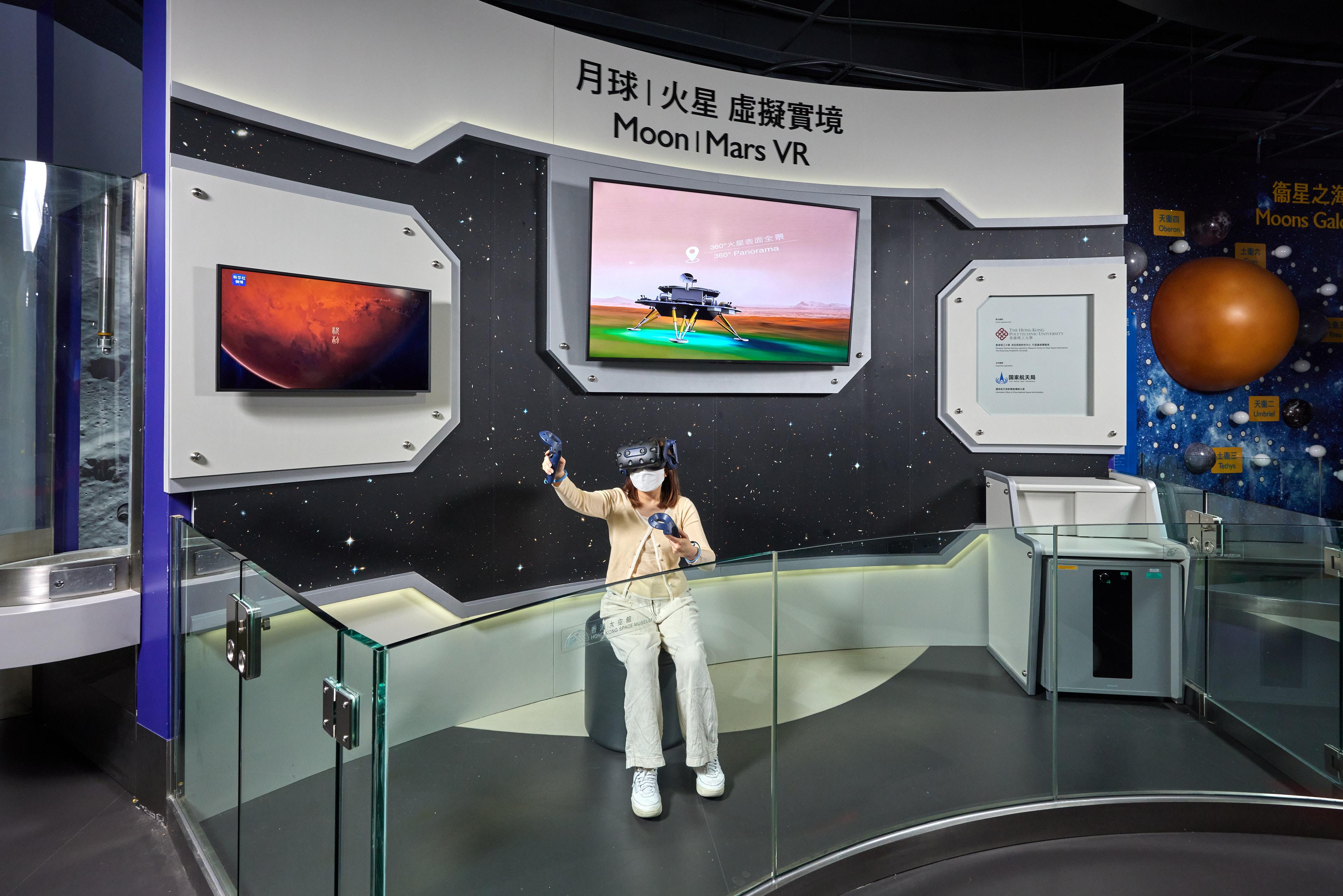Hong Kong Space Museum showcases virtual reality exhibit to let visitors understand spacewalking on the moon and Mars (with photo)
******************************************************************************************
China's aerospace industry has been advancing rapidly, and yielded epoch-making results in both lunar and Mars exploration missions in the past decade. The spirits of dedicated science teams are pivotal to the success of these missions. PolyU team has been participating in multiple deep space explorations by China and made significant contributions to building devices and analysing data required for the spacecraft to conduct landing and sampling successfully.
Jointly presented by the Leisure and Cultural Services Department (LCSD) and PolyU, this virtual reality exhibit is jointly implemented by the Hong Kong Space Museum and the Planetary Remote Sensing Laboratory of the Research Centre for Deep Space Explorations of PolyU, and supported by the China National Space Administration and the China National Space Administration Information Office.
The exhibit will be open to the public in sessions on a first-come, first-served basis at the Hall of the Cosmos at the Hong Kong Space Museum, 10 Salisbury Road, Tsim Sha Tsui, Kowloon. As participants are required to put on a headset provided by the Museum, the exhibit is only suitable for persons aged 13 or above. For details, please visit the website at hk.space.museum/en_US/web/spm/exhibitions/permanent-exhibition/moon-mars-vr.html, or call 2721 0226 for enquiries.
To tie in with the introduction of this new exhibit, the Hong Kong Space Museum has invited Professor Wu to deliver a special lecture titled "Space Exploration: A Journey to the Heavenly Questions" from 3pm to 4.30pm on December 3 at the Lecture Hall of the Hong Kong Space Museum. The Museum will livestream this special lecture via its YouTube channel (www.youtube.com/hkspacem) and the "LCSD Plusss" Facebook page (www.facebook.com/LCSDPlusss). Admission is free with limited seats on a first-come, first-served basis.
In order to comply with the Prevention and Control of Disease (Requirements and Directions) (Business and Premises) Regulation (Cap. 599F) and relevant requirements of administrative instructions, visitors are required to scan the "LeaveHomeSafe" venue QR code with their mobile phones/other mobile devices before being allowed to enter the museums under the management of LCSD. In accordance with the Prevention and Control of Disease (Vaccine Pass) Regulation (Cap. 599L) and relevant requirements of administrative instructions, members of the public entering indoor venues under the management of the LCSD must comply with the relevant requirements of the Vaccine Pass. According to the current requirement on the Vaccine Pass, all persons with their Vaccine Pass QR codes displayed in red are not allowed to enter museums under the management of the LCSD while patrons holding amber codes are allowed to enter the premises with a valid Vaccine Pass.
Ends/Friday, December 2, 2022
Issued at HKT 16:30
Issued at HKT 16:30
NNNN





